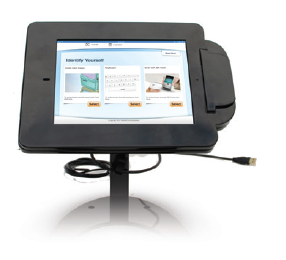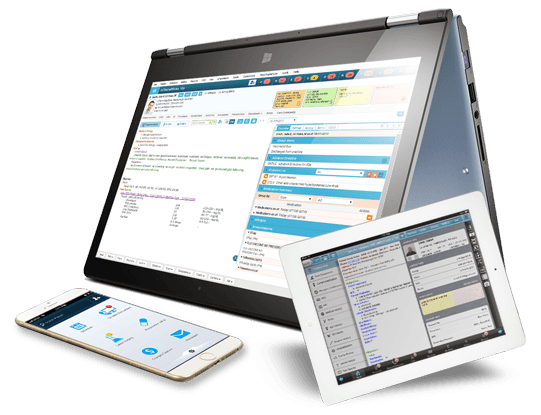Lessons to be Learned
Through statistical analysis, TrailBlazer (MAC for Colorado, New Mexico, Oklahoma, Texas, and Virginia) identified potential improper utilization of established office visit services (codes 99211–99215) billed to Medicare. Two widespread probe reviews were conducted recently to verify if this perceived improper utilization was actual or not. These reviews are called “widespread” because documentation is evaluated from multiple providers. TrailBlazer used the Progressive Correction Action (PCA) process to identify a random sample of 200 claims (two reviews) containing established office visits with dates of service from January 1, 2010, through June 30, 2010. The selection of providers for this review was based on a scoring methodology that considered the following variables:
-
Distribution of claims volume for CPT codes 99211–99215
-
Distribution of paid dollars for CPT codes 99211–99215
-
Percent of claims billed with modifier 25
-
Percent of claims billed with CPT codes 99211–99215 billed as 99214/99215
-
Frequency of services per beneficiary for CPT codes 99211–99215 compared to the peer average
One probe review (100 claims) was conducted on selected providers in Virginia. The other probe review (100 claims) was conducted on selected providers in Colorado, New Mexico, Oklahoma and Texas.
The Probe’s Findings
Overall error rate for each probe review was:
Virginia: 51.43 percent.
Colorado, New Mexico, Oklahoma and Texas: 91.32 percent.
This error rate is calculated by the following formula:
Dollar amount of services paid in error, as determined by Medical Review
Dollar amount of services medically reviewed
Medical Review Probe Findings
The following issues were identified in the Probe when evaluating medical documentation submitted for these reviews:
§ Documentation did not support Medicare’s requirements for the Evaluation and Management (E/M) service to be considered medically reasonable and necessary:
-
Inappropriate billing of an E/M service when only providing a non-covered service (e.g., acupuncture).
-
The chief complaint was absent, ambiguous or not addressed in the history, exam or Medical Decision-Making (MDM).
-
The chief complaint indicated the reason for the encounter was for administration of a medication, to have labs drawn or to receive the results for labs. None of these situations requires an E/M service.
-
In the absence of an acute problem, the frequency of E/M services billed per beneficiary for CPT codes 99212–99215 exceeded documented needs for management of stable, chronic conditions.
-
Documentation for the patient encounter did not provide a complete picture of the patient evaluation and management over time or the nature of the presenting problem.
-
Documentation of an exam was absent from the patient’s medical record.
-
Documentation of MDM was absent from the patient’s medical record.
The requested documentation was not received. The documentation did not support the use of the 25 modifier (no significant, separately identifiable E/M service was documented):
-
Documentation did not support a separate or any E/M services rendered.
-
Inappropriate billing of E/M services with physician attendance and supervision of hyperbaric oxygen therapy, intravenous infusions and various physical therapy services.
Services were recoded for one of the following reasons:
-
The documentation did not support the level of E/M service billed:
-
The level of service exceeded the patient’s documented needs.
-
History and examination components were excessive for the patient’s presenting problem.
-
The History of Present Illness (HPI) was absent, insufficient (e.g., no Review of Systems (ROS) or no Past, Family and Social History (PFSH)), or did not clearly define the patient’s presenting problem.
-
The frequency of E/M services provided, considering the beneficiary claims history, made the utilization of CPT codes 99214 and 99215 inappropriate for the documented needs of the patient.
-
Documentation did not include the performance of a physical examination.
Guidelines Available
Understanding and adhering to Medicare guidelines regarding coverage and documentation requirements associated with billing established office visits will ensure accurate payment. Several of these guidelines are listed below.
Coverage and documentation requirements as well as links to CMS’ Web site are available on the TrailBlazer Evaluation and Management Services Web page.
In conclusion, Medicare expects providers who bill these services to:
-
Bill an E/M service only when the service meets medical necessity requirements and document sufficiently to support the medical necessity of the E/M service billed. Medicare determines “medically reasonable and necessary” separately from determining the work described by a reported CPT code performed. The patient’s condition (severity, acuity, number of problems, etc.) is the key factor in determining medical necessity for Medicare payment for services.
-
Bill the level of E/M service appropriate to treat the patient’s presenting problems. Documentation of E/M services billed for Medicare payment must ensure the patient’s clinical condition and reason for the service are documented in enough detail for a reasonable observer to understand the patient’s need and the practitioner’s thought process. The E/M code billed must reflect patient’s needs, work performed and medical necessity. Though an E/M service may code to a high level based on the documentation of key component work, it is inappropriate to request Medicare payment when the patient’s effective management does not require the code’s work.
-
Medicare generally expects to see E/M services billed every three months for patients with chronic, stable conditions.
-
Comply with the requirements for use of the 25 modifier.
Modifier 25 is used when a significant, separately identifiable E/M service is performed by the same physician on the same day as a procedure or other service. The E/M service must meet the following criteria:
-
Must have been performed and documented according to CPT code requirements and statutes concerning coverage and payment.
-
Must be coded according to its medical necessity and documented CPT physician work.
-
Must be a separately identifiable service provided on the same day, on the same patient and by the same practitioner as a therapeutic medical/surgical and/or diagnostic medical/surgical procedure with either a zero- or 10-day global period. The E/M service may result in the decision to perform a zero- or 10-day global procedure when the need to perform the procedure was not planned, was not foreseeable and the condition for which the procedure was necessary could not have been determined to exist without having performed the E/M service (i.e., new problem or new, previously undisclosed event related to a known problem).
-
Must not have resulted in a decision to perform a major operative procedure (surgery).
-
Must be a significant service, above and beyond the usual preoperative and postoperative work/care required by the therapeutic or diagnostic service also performed.








